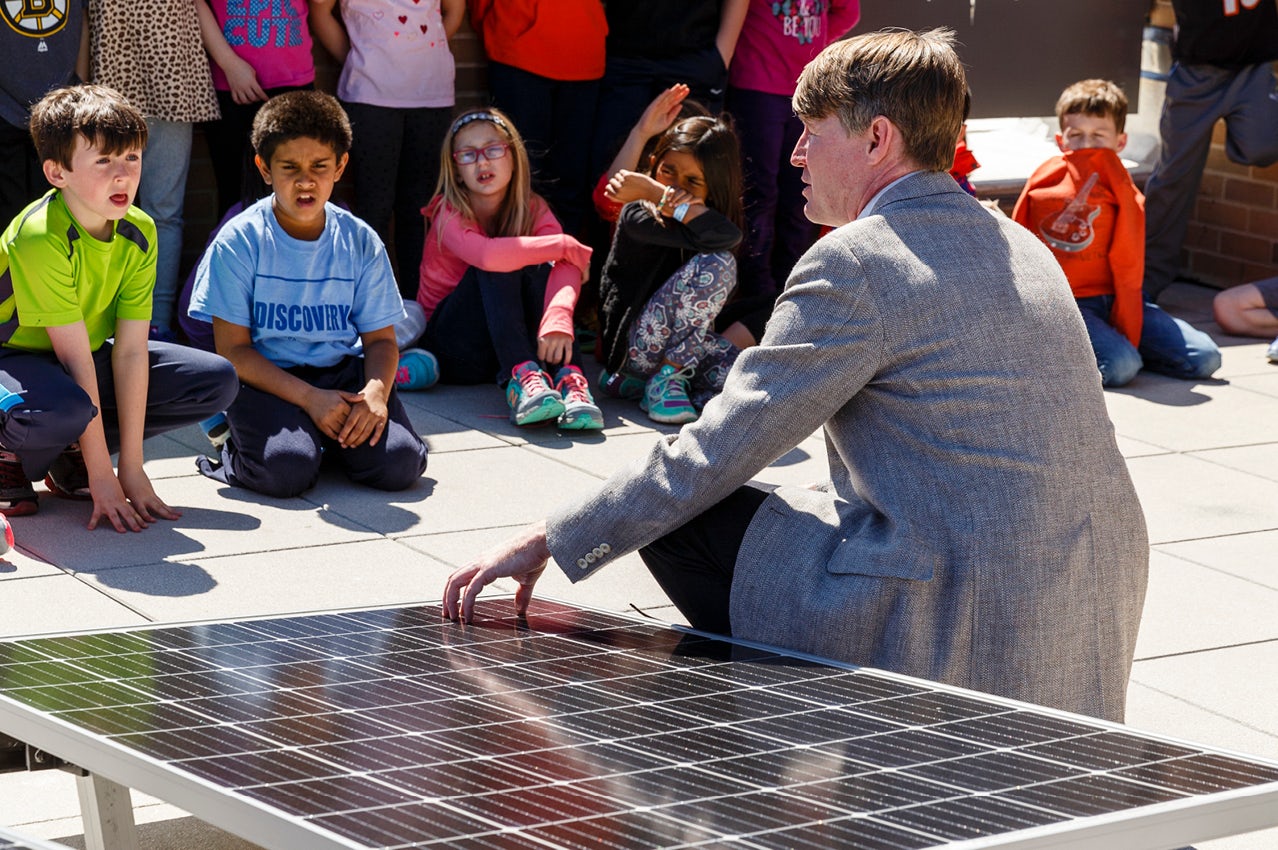This article was originally published by the Green Schools National Network about the net-zero design strategies involved in planning, designing, and building Discovery Elementary School.
The start of a new school year is an exciting time for students, full of anticipation and promise. This statement is especially true for the PreK-5 students in Arlington, Virginia attending Discovery Elementary School. Not only are the students attending school in a brand new building, Arlington County’s first new elementary school in more than ten years, they are attending school in a net-zero energy building. In fact, Discovery Elementary School is expected to be the first net-zero energy school in the Commonwealth of Virginia, as well as the largest in the United States and the first in the entire northeast.
Going for Net-Zero
Discovery Elementary School was conceived and built out of a need to address Arlington Public School’s (APS) growing student enrollment. The new school project provided an opportunity for APS to incorporate sustainability into its design, and to design the school for the highest standard possible: net-zero. With a limited budget, the district initially set its sights on achieving a Leadership in Energy and Environmental Design (LEED) Silver rating. The project architect, VMDO Architects, believed they could do even better and stay within budget.
To achieve a net-zero energy building, VMDO partnered with CMTA Engineers. CMTA had previous experience with net-zero energy schools, having designed the first net-zero energy school in the United States (Richardsville Elementary in Bowling Green, KY). The net-zero energy school in Arlington was designed so the amount of energy produced by onsite renewable sources exceeded the amount of energy used. By working together, VMDO and CMTA were able to incorporate many energy conserving measures, including the construction of a geothermal well-field under the school’s playing fields and the installation of approximately 1700 solar panels on the school’s roof. John Chadwick, APS’s Assistant Superintendent for Facilities and Operations, was instrumental in selecting VMDO to head up the project and had this to say in a recent article by WAMU American University Radio: “It was actually the team that we picked that thought this school could be a candidate for net-zero energy, so they really brought that to the table. We had very high standards for sustainability but we actually hadn’t considered going that far.” Discovery Elementary School joins a list of only 38 other net-zero energy buildings in the United States, only 4 of which are K-12 schools.
Reaping the Benefits
The benefits of operating a net-zero school go beyond maintaining a carbon neutral footprint. Most notable are the financial benefits: a school of similar size to Discovery Elementary has approximately $120,000 in annual energy costs. Discovery’s energy innovations are projected to reduce that cost to $72,000 a year. The money saved is returned to the school district’s operating budget, allowing the district to reinvest that money back into the school and its students’ education.
A less tangible benefit is the impact of the building on the students. By including features throughout the school that emphasize sustainability and inquiry-based science lessons, students are more engaged in their learning and have adopted a sense of ownership and pride in their school’s energy efficiency efforts. In fact, students are measuring more than just energy. For example, a scale is being used in the cafeteria to determine how much food waste is being created, as well as how much leftover, uneaten food can be saved for donation. Students at Discovery are not just adopting a new mindset when it comes to sustainability; they are adopting a stewardship ethic and a lifestyle that will serve them and the planet well into the future.
Check out the full article: https://greenschoolsnationalnetwork.org/net-zero-discovery-elementary-school-in-arlington-va-raises-the-bar-for-energy-efficiency/

